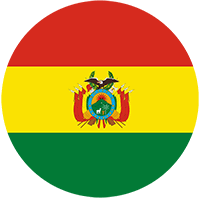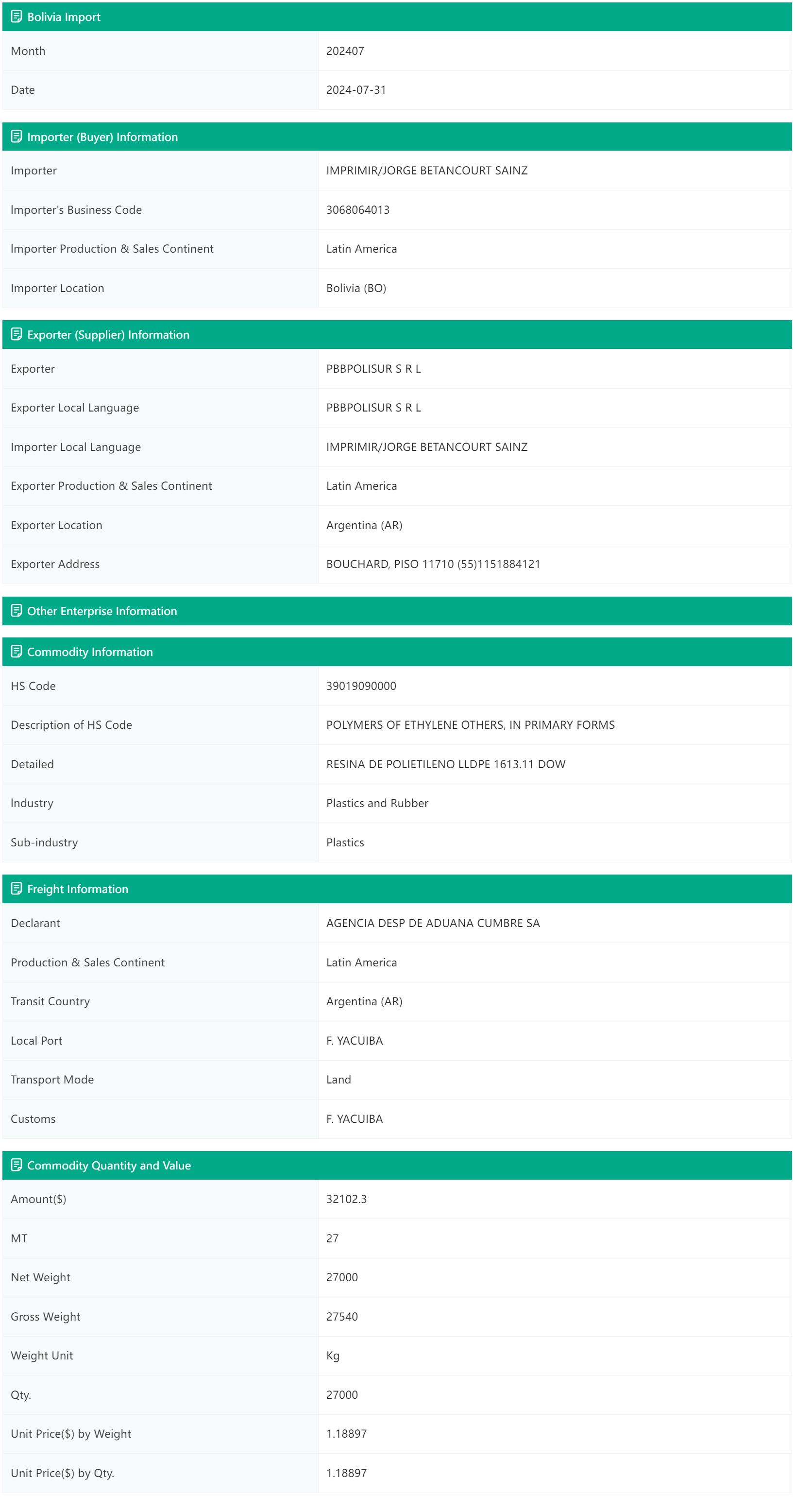Bolivia is a landlocked country in South America. It borders Brazil to the north and east, Argentina and Paraguay to the south, and Peru and Chile to the west and southwest. It is a world-renowned country rich in minerals. It is rich in minerals such as lithium, tin, antimony, gold, silver, copper, iron, and zinc. The lithium resources in salt lakes exceed 21 million tons (lithium metal equivalent) and rank first in the world. However, Bolivia has a single industrial sector structure, a weak industrial foundation, and backward infrastructure. Exports of natural gas, ores, and agricultural products are the main sources of foreign exchange earnings.
Bolivia is a member of the United Nations, the Non-Aligned Movement, the World Trade Organization, the Group of 77, the Organization of American States, the Community of Latin American and Caribbean States, the Bolivarian Alliance for the Americas, the Union of South American Nations, the Andean Community, the Organization of the River Plate Basin, and the Amazon Cooperation Treaty Organization. It maintains diplomatic relations with more than 80 countries.
The official languages of Bolivia are Spanish and 36 indigenous languages such as Quechua, Aymara, and Guarani.
**Oil and natural gas**
Bolivia is the second largest natural gas producer in South America after Venezuela. Natural gas is an important pillar industry. According to statistics from the Bolivian National Oil Company, in 2022, natural gas production was approximately 43.15 million cubic meters per day, and oil production was 28,600 barrels per day. In 2022, Bolivia's oil and gas export volume reached 2.97 billion US dollars, an increase of 75% compared to 2021. In the first half of 2024, Bolivia's natural gas export volume was 877 million US dollars, a year-on-year decrease of 18.1%.
**Mineral resources**
Bolivia is located in the Andean metallogenic belt. Historically, it was known as the ""Republic of Mining"". It is a world-famous country rich in minerals and a traditional exporter of mineral products. According to the latest statistics of the United States Geological Survey, Bolivia's proven lithium reserves are 21 million tons (lithium metal equivalent), making it the country with the largest lithium reserves in the world; antimony reserves are 310,000 tons, ranking third in the world; tin reserves are 400,000 tons, ranking fourth in the world; lead reserves are 1.6 million tons, ranking ninth in the world; zinc reserves are 4.8 million tons, ranking tenth in the world; silver reserves are 22,000 tons, ranking tenth in the world.
In 2022, Bolivia's mineral export volume reached 6.633 billion US dollars, mainly zinc (1.821 billion US dollars), silver (868 million US dollars), lead (194 million US dollars), tungsten (29.31 million US dollars), tin (51,400 US dollars), gold (3.008 billion US dollars), silver (868 million US dollars) and other minerals (154 million US dollars). The top three export destinations of Bolivia's mineral products are India, Japan and China. In the first half of 2024, silver export volume was 523 million US dollars, and tin export volume was 244 million US dollars, increasing by 29% and 44% respectively year-on-year.
**Agriculture and animal husbandry**
Agriculture and animal husbandry are an important part of Bolivia's economy. The main crops in Bolivia are corn, wheat, rice, potatoes, sugar cane, cotton, coffee, soybeans and coca. The main exports are nuts, quinoa, fruits, coffee, soybeans and sesame.
In 2022, Bolivia's agricultural exports were strong, and exports of beef, soybeans and their derivatives grew rapidly. In the first half of 2024, Bolivia's beef exports were 86 million US dollars, a year-on-year increase of 63%, mainly exported to China, Russia, Peru, Ecuador and other countries. In the first half of 2024, the export volume of soybean derivatives was 504 million US dollars, a year-on-year decrease of 31.8%.
In 2022, Bolivia's quinoa export volume was 22,700 tons, a year-on-year decrease of 20.8%, and the export value was 46.5 million US dollars, a year-on-year decrease of 24.7%. The export price of quinoa dropped from 6,602 US dollars/ton (in 2014) to 1,958 US dollars/ton (in 2023).
For the first time in the past 19 years, Bolivia's agricultural industry has exceeded the export volume of the oil and gas industry. Data shows that in 2022, its agricultural export volume reached 3.225 billion US dollars, exceeding the export volume of oil and gas (3.089 billion US dollars).
In 2023, Bolivia's export volume was 10.911 billion US dollars, a year-on-year decrease of 20%. The main export markets are Brazil, China, Argentina, India, Chile and the United States. The total import volume was 11.496 billion US dollars, a year-on-year decrease of 3.2%. Among imports, vehicles account for 17%, fuel and lubricants account for 26%, industrial products account for 26%, consumer goods account for 10%, and food and beverages account for 6%.
Blooming Trade Data: Bolivia customs import and export data, continuously updated, including importer information, exporter information, commodity information, freight information, and commodity price information (trade volume, trade value, unit price, etc.).
Do you want to understand the market demand in Bolivia? Are you looking to expand your international market presence in Bolivia? Are you seeking more cooperation with clients and reliable suppliers in Bolivia?

Sample Data


